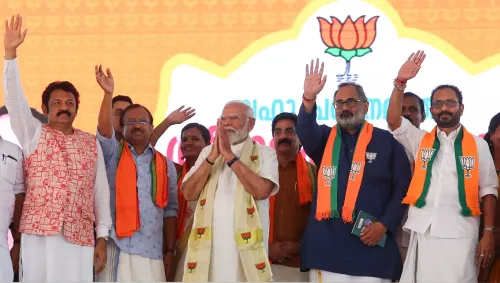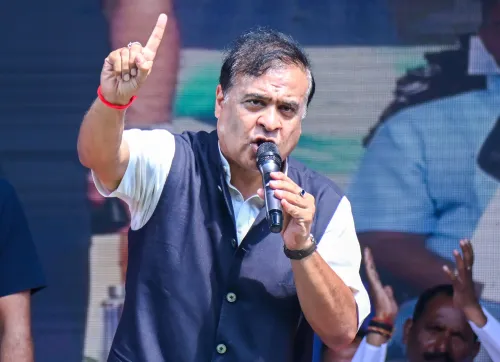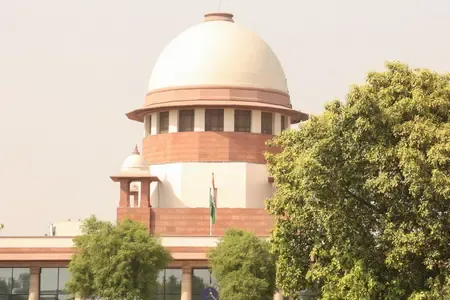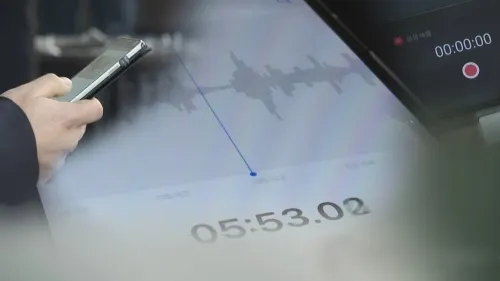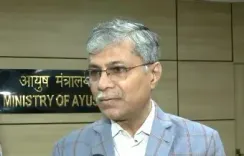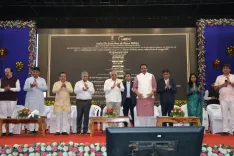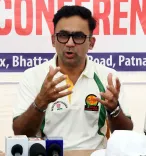How Does the Indian Navy Chief Propose a Collective Maritime Strategy for the Complex Indo-Pacific Region?
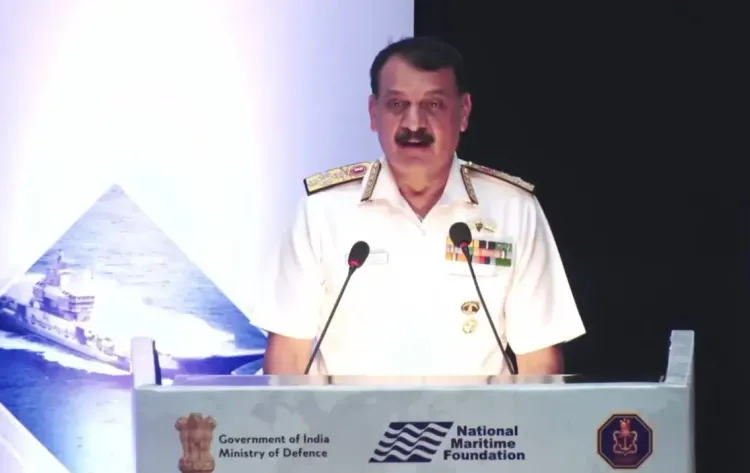
Synopsis
Key Takeaways
- Need for collective maritime security strategies.
- Emphasis on technology in naval operations.
- Addressing illegal fishing and environmental threats.
- Focus on partnerships and capacity building.
- Importance of a secure maritime order for regional stability.
New Delhi, Oct 28 (NationPress) The chief of the Indian Navy, Admiral Dinesh K. Tripathi, on Tuesday, highlighted the necessity for a unified, cooperative, and technology-driven approach to ensure maritime security in the increasingly intricate Indo-Pacific, during the opening of the 11th edition of the Indo-Pacific Regional Dialogue (IPRD) here.
Welcoming over 30 international delegates, Admiral Tripathi asserted that the future of the Indo-Pacific must be collaboratively shaped through dialogue, cooperation, and mutual trust.
This year’s theme illustrates India’s broadened maritime vision — evolving from SAGAR (Security and Growth for All in the Region) to MAHASAGAR (Mutual and Holistic Advancement for Security and Growth Across Regions) — showcasing India’s dedication to a secure and inclusive maritime framework.
Emphasizing what he referred to as the “dynaxity” of the maritime landscape — a fusion of dynamism and complexity — Admiral Tripathi identified three defining currents: commercial disruption, transnational turbulence, and technological acceleration.
He noted, “Global seaborne trade growth is anticipated to decrease to 0.5 percent in 2025 from 2.2 percent in 2024, indicating strategic fragility,” citing the Red Sea crisis as an example of how chokepoints can destabilize global supply chains.
“The Red Sea crisis has illustrated how a single maritime chokepoint can affect global freight indices, insurance premiums, and food prices,” he remarked.
Additionally, he cautioned against rising illegal fishing, trafficking, and maritime pollution, which jeopardize livelihoods, particularly in Small Island Developing States.
According to the UN Food and Agriculture Organisation (FAO), IUU fishing activities lead to the loss of between 11 to 26 million tonnes of fish annually, valued at an estimated $10 to 23 billion.
He also pointed out that smuggling networks are exploiting ungoverned maritime areas and weak enforcement regimes to transport narcotics, arms, and even sanctioned goods, which finance terror networks and fuel instability on land.
He added, “Rising sea levels, extreme weather, and marine pollution have introduced new dimensions to transnational maritime challenges, threatening both lives and livelihoods, especially for Small Island Developing States (SIDS).”
On the subject of technology, he acknowledged that while AI, autonomous systems, and satellites are enhancing maritime awareness, they also reveal vulnerabilities such as GPS jamming and cyber intrusions.
Admiral Tripathi outlined three pillars to navigate maritime “dynaxity”: holistic maritime security, capacity building, and capability enhancement.
He emphasized the Indian Navy’s initiatives, including the Information Fusion Centre–Indian Ocean Region (IFC-IOR) in Gurugram, which currently hosts 15 international liaison officers and aims to expand to 50 by 2028.
He also referenced India’s collaborative exercises such as AIKEYME with African nations and Pacific Reach, along with innovations like the indigenous NISHAR-MITRA terminals for secure communication.
“India’s experience illustrates that capacity building cannot be an insular venture. It flourishes through partnerships, joint design, co-production, maintenance collaboration, and mutual assistance in crisis response,” he stated.
“Under MAHASAGAR, India’s defense-industrial transformation aims to extend such cooperation beyond our shores, enabling friends and partners to enhance their maritime presence with indigenous design, affordable technologies, and sustainable support systems. True capacity, after all, is not what a nation gathers, but what a region consolidates.”


